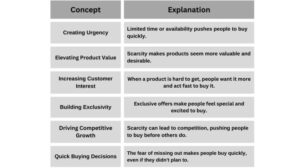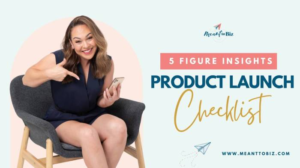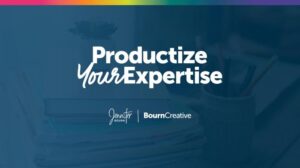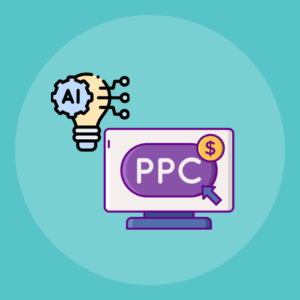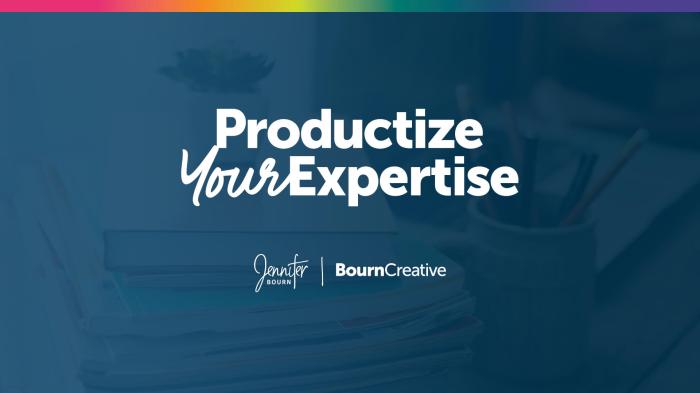
Turn your expertise into a product is not just a catchy phrase; it’s a transformative journey that empowers individuals to monetize their unique skills and knowledge. By identifying your niche and packaging your expertise, you can create valuable products that resonate with your audience, opening doors to new opportunities and income streams.
In this discussion, we will explore the essential steps to turn your knowledge into marketable products, from validating ideas to building an audience. With practical strategies and insights, you’ll be well-equipped to launch your product and make a lasting impact in your field.
Turning Expertise into a Product

Transforming your expertise into a product can be a rewarding journey, allowing you to share your knowledge and skills with a wider audience while generating income. The key to this process lies in understanding your unique niche and effectively packaging your expertise so it resonates with your target market. Recognizing your strengths and honing in on specific areas of expertise can set the foundation for a successful product.Identifying your niche begins with a thorough self-assessment of your skills, experiences, and passions.
This process allows you to clarify what you excel at and how that knowledge can fulfill a demand in the market. Take the time to reflect on your professional background, hobbies, and any specialized knowledge you possess. By aligning your experience with market needs, you can carve out a distinct niche.
Methods for Validating Product Ideas
Before diving into product creation, it’s essential to validate your product ideas to ensure there is a market for them. Validating your concept minimizes risks and helps clarify your direction. Here are several methods to consider:
- Market Research: Conduct surveys, interviews, or focus groups with your target audience to gather feedback on your idea. This will provide insights into whether there is genuine interest in your proposed product.
- Competitor Analysis: Research existing products in your niche. Examine their strengths and weaknesses, and identify gaps in the market that your product could fill.
- Prototyping: Create a simple version of your product or a minimum viable product (MVP) to test with a small audience. This allows you to make adjustments based on real user feedback.
Validating your product idea not only confirms its viability but also helps you refine your offering based on your audience’s needs.
Steps to Package Knowledge into a Marketable Product
Once you have validated your product idea, the next step is to package your knowledge effectively. This process involves several key considerations that can enhance its marketability:
- Define Your Target Audience: Clearly identify who will benefit from your product. Understanding the demographics, interests, and pain points of your audience will guide your content and marketing strategies.
- Create Compelling Content: Whether it’s an e-book, course, or webinar, ensure the content is engaging and provides value. High-quality, well-structured content establishes credibility and attracts customers.
- Design an Attractive Brand: Develop a strong brand identity that reflects your expertise and appeals to your target market. Consider elements such as logo design, color schemes, and overall messaging.
- Choose the Right Platform: Select a platform for selling or distributing your product. Options can include online marketplaces, personal websites, or membership sites, depending on your audience and product type.
Packaging your expertise effectively involves not just delivering knowledge, but also presenting it in a way that resonates with potential buyers, thereby enhancing your product’s appeal and reach.
Strategies for Building an Audience

Building an audience is a critical step in turning your expertise into a product. Establishing a robust customer base not only enhances your reach but also fosters trust and credibility in your brand. In this segment, we will explore effective techniques for list building, leveraging social media, and creating a plan for audience engagement.
List Building Techniques
Building a list of potential customers is essential for any business. It allows for direct communication and marketing efforts that can significantly increase sales. Here are some effective techniques to develop your list:
- Lead Magnets: Offering valuable resources like eBooks, webinars, or templates in exchange for contact information can effectively draw potential customers into your list.
- Opt-in Forms: Strategically placing opt-in forms on your website and social media channels ensures that visitors can easily subscribe to your updates.
- Content Upgrades: Providing specialized content that complements existing blog posts can encourage readers to subscribe for more detailed insights.
- Email Courses: Creating a free email course related to your expertise can attract subscribers who are eager to learn more.
Leveraging Social Media
Social media has become a potent tool for increasing link popularity and driving traffic to your products. Utilizing these platforms can significantly enhance your visibility and engagement with your audience. Here are some strategies to consider:
- Share Valuable Content: Regularly post informative content that resonates with your audience to encourage shares and interactions.
- Engage with Your Followers: Responding to comments, questions, and messages can create a sense of community and increase your follower count.
- Utilize Hashtags Effectively: Using relevant hashtags can expand your reach and help new audiences discover your content.
- Collaborate with Influencers: Partnering with influencers in your niche can expose your brand to a larger audience and enhance credibility.
Engaging with Your Audience
Engagement is key to fostering trust and loyalty among your audience. A well-structured engagement plan will not only maintain interest but also encourage conversions. Here’s how to effectively engage with your audience:
- Regular Updates: Consistently share updates about your products, industry news, and insights through newsletters or social media posts.
- Personalized Communication: Tailoring your messages based on customer preferences and behaviors can significantly enhance engagement.
- Feedback and Surveys: Actively soliciting feedback through surveys can help you understand your audience’s needs and improve your offerings.
- Community Building: Creating a space, such as a forum or Facebook group, where your audience can share ideas and ask questions can strengthen their connection to your brand.
Launching Your Product Successfully
Launching a product is a crucial phase that can define its overall success. Adequate preparation and strategic execution can significantly increase the chances of a successful launch. By focusing on a well-structured checklist, gathering feedback effectively, and utilizing targeted advertising strategies, you can enhance your product’s visibility and appeal in the market.
Product Launch Checklist
A comprehensive checklist prior to launching your product ensures that no critical steps are overlooked. This organized approach helps streamline the launch process and sets a solid foundation for the product’s introduction to the market. Below are essential pre-launch activities to consider:
- Finalize product development and testing to ensure quality.
- Create a marketing plan outlining the target audience and key messaging.
- Develop a landing page that clearly showcases the product benefits.
- Prepare promotional materials, including images, videos, and copy.
- Set up social media profiles dedicated to the product.
- Organize an email list for potential customers to generate buzz.
- Implement strategies to enhance discoverability online.
- Plan and schedule the launch date and marketing activities around it.
Utilizing Paid Surveys for Feedback
Paid surveys are an effective method for gathering actionable feedback from your target audience. They can assist in refining your product and positioning it more effectively in the market. Here’s how to leverage paid surveys:
- Design surveys that focus on specific aspects of your product, such as usability, features, and pricing.
- Use platforms like SurveyMonkey or Google Forms to distribute surveys and collect data efficiently.
- Incentivize participation with discounts or free trials to increase response rates.
- Analyze feedback to identify trends, preferences, and areas for improvement.
- Implement the insights gathered into your product development process.
“The best feedback comes from those who have experienced your product firsthand.”
Utilizing PPC Advertising
Pay-per-click (PPC) advertising is a powerful tool for driving traffic to your product page. With the right strategies, you can maximize your reach effectively. Consider the following tactics:
- Identify relevant s that potential customers are searching for and incorporate them into your ads.
- Create compelling ad copy that highlights your product’s unique selling points and encourages clicks.
- Use targeted demographics to ensure your ads reach the most relevant audience.
- Set a budget that aligns with your overall marketing plan, allowing for flexibility in ad spend.
- Monitor performance metrics such as click-through rates and conversion rates to optimize your campaigns.
“Effective PPC advertising not only brings traffic but also enhances brand visibility.”
Concluding Remarks
In conclusion, turning your expertise into a product is a fulfilling endeavor that requires thoughtful planning, audience engagement, and strategic marketing. By following the Artikeld steps and utilizing effective techniques, you can successfully launch your product and achieve your goals. Embrace the journey and watch as your knowledge transforms into a product that not only benefits you but also serves your customers.
FAQ Explained
What types of products can I create from my expertise?
You can create a variety of products such as e-books, online courses, workshops, consulting services, and membership sites based on your expertise.
How do I know if my product idea is viable?
Validating your product idea can be done through market research, surveys, and feedback from potential customers to ensure there is demand.
What platforms can I use to launch my product?
Platforms like Gumroad, Teachable, and Shopify are great for launching products, while social media channels can be used for marketing.
How important is audience engagement in the product launch process?
Audience engagement is crucial as it builds trust, encourages feedback, and increases the likelihood of sales during the launch.
Can I launch multiple products at once?
While it’s possible, it’s often more effective to focus on one product at a time to ensure quality and targeted marketing efforts.
